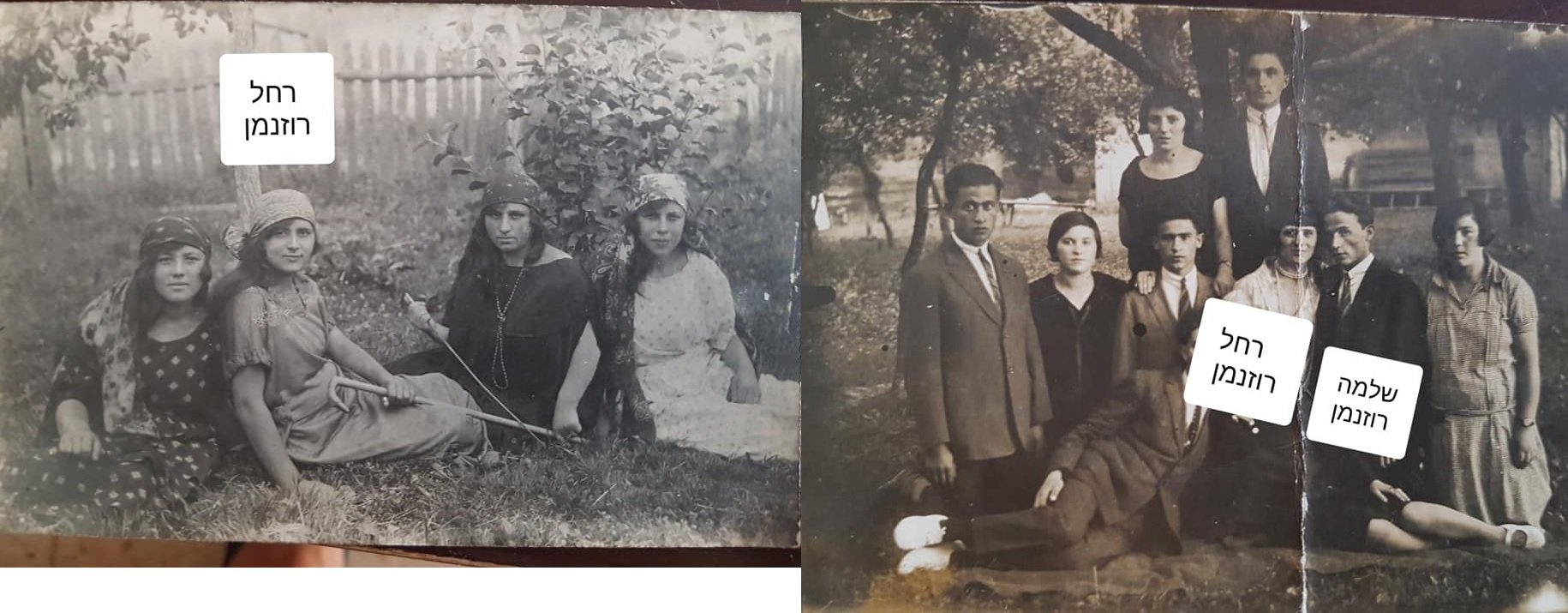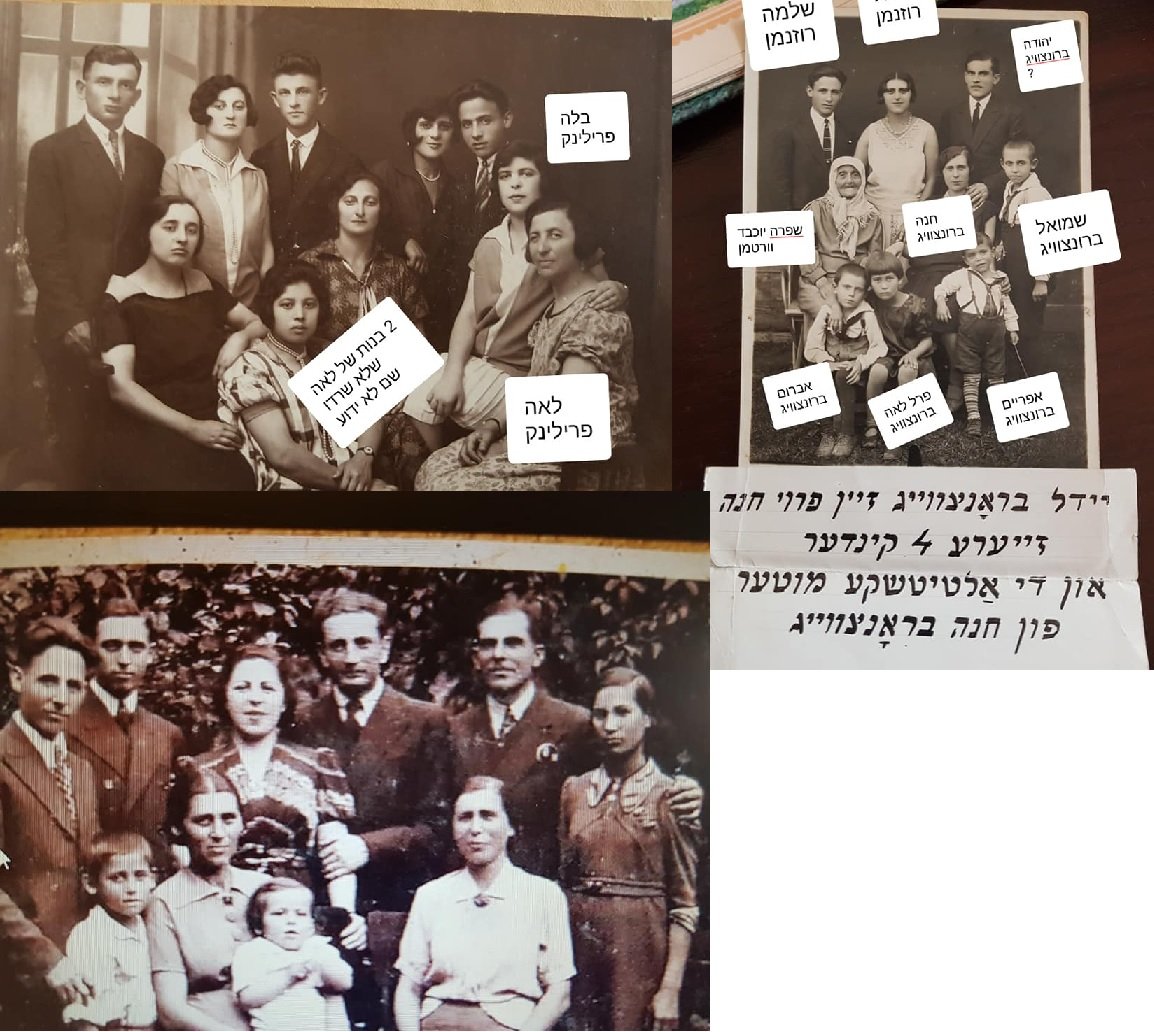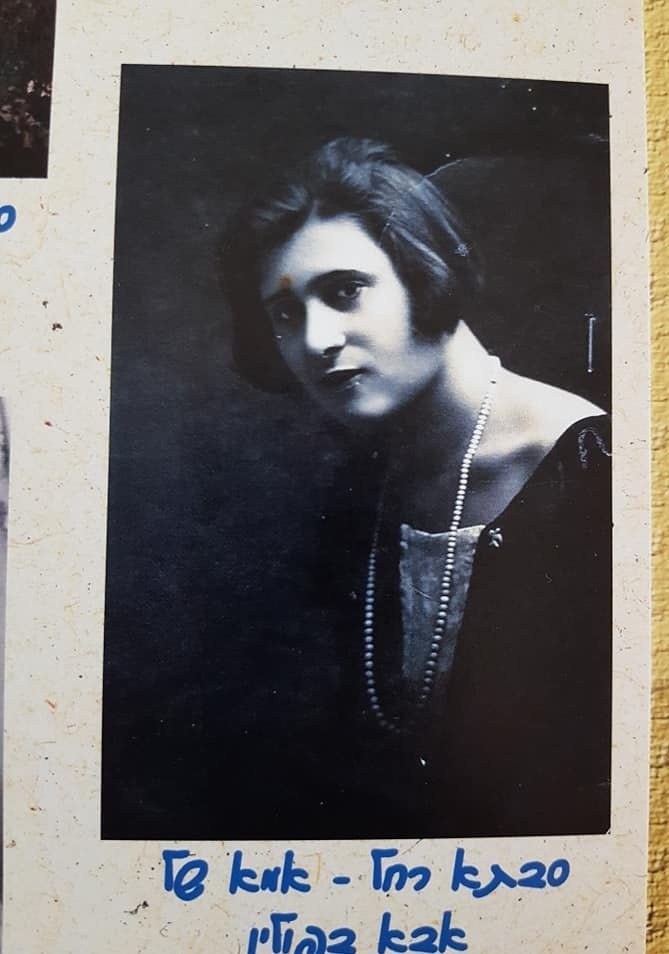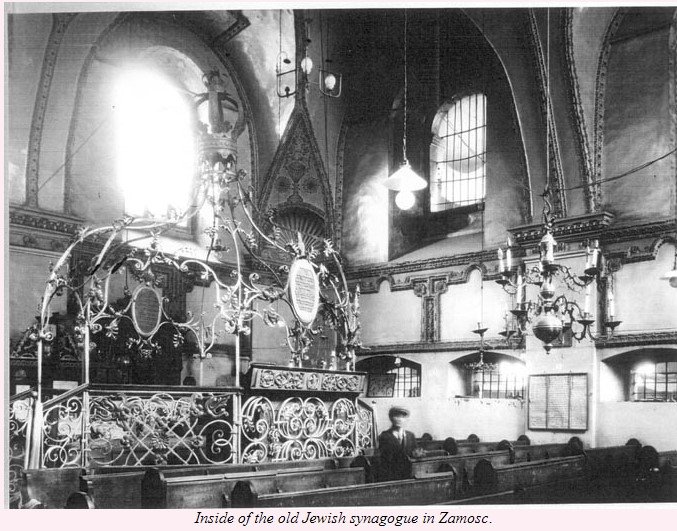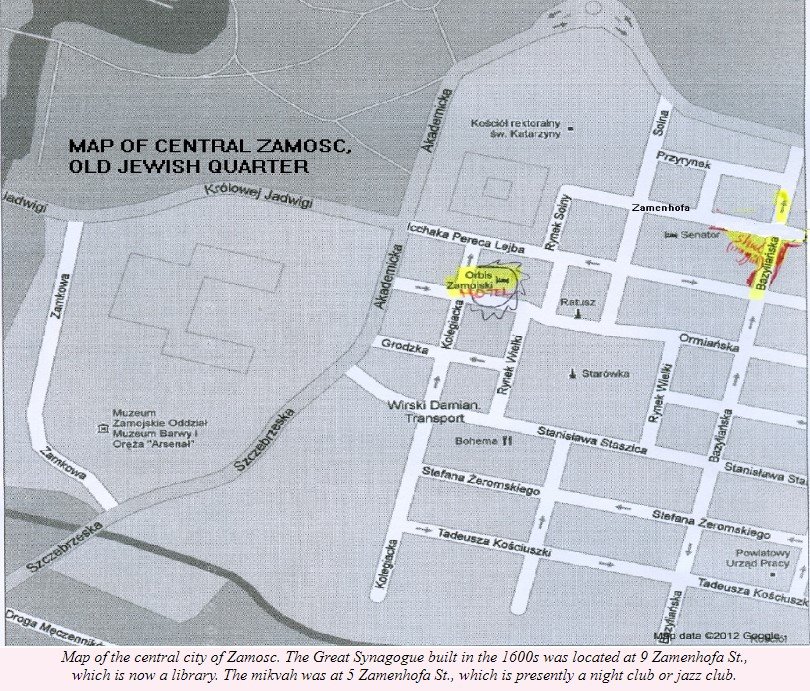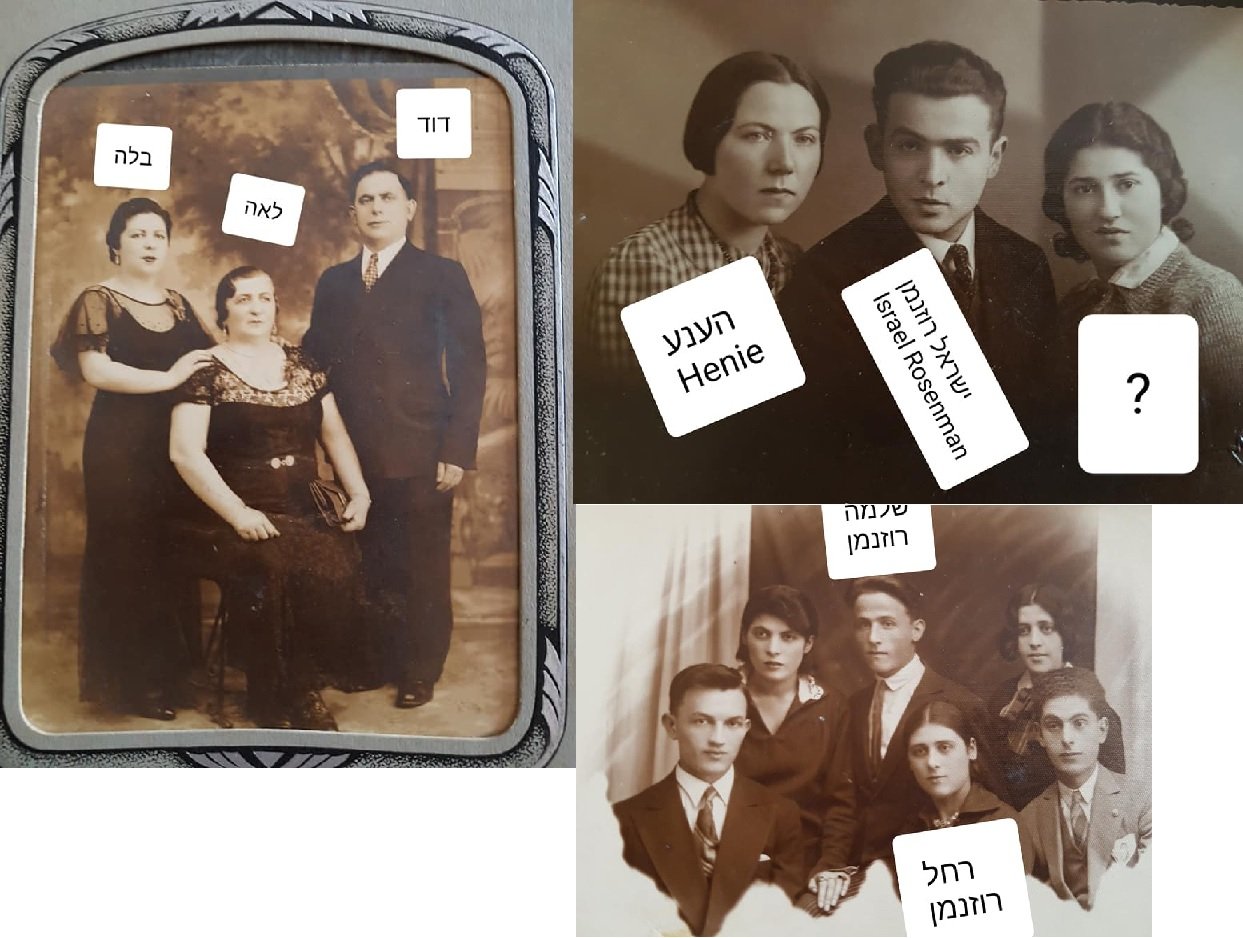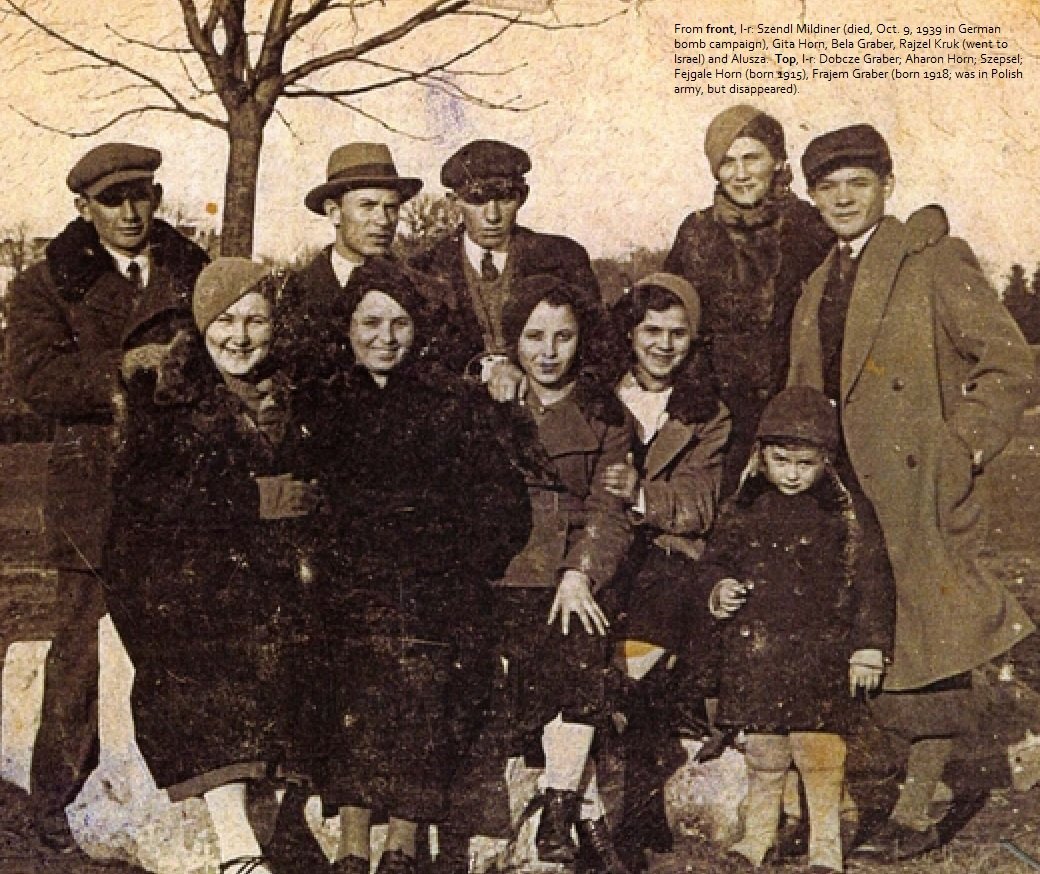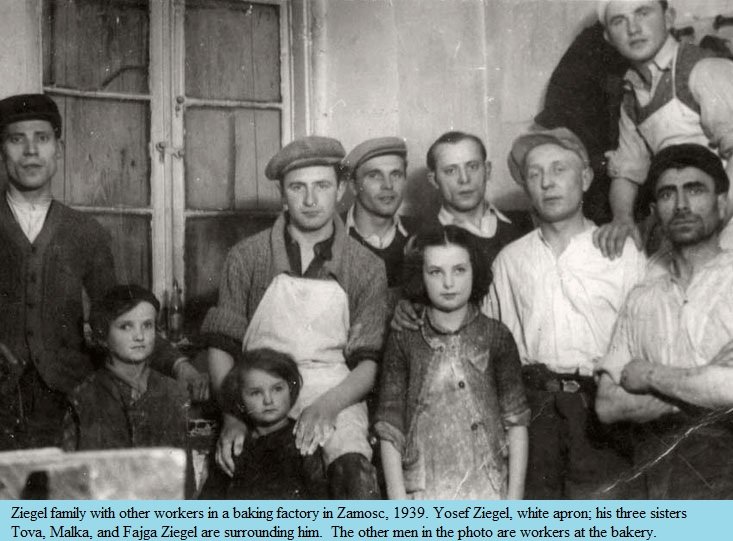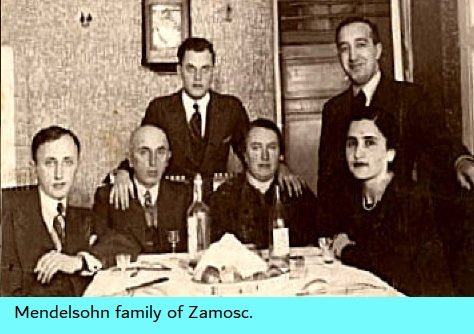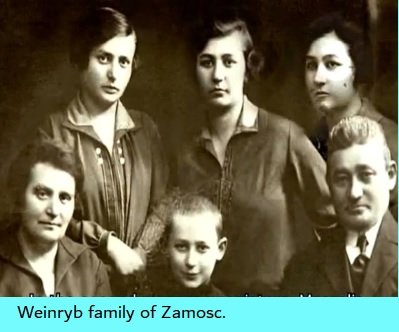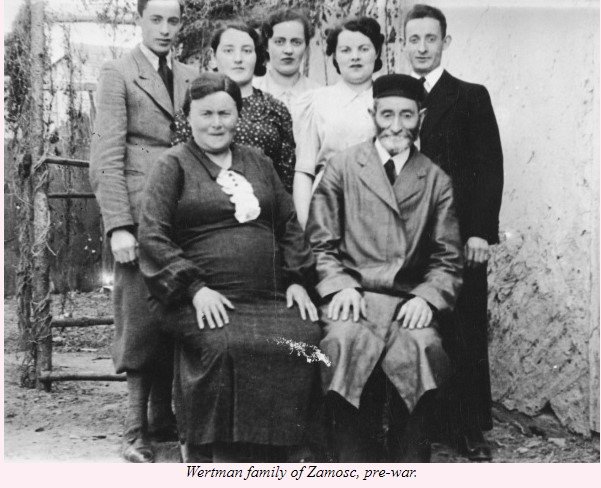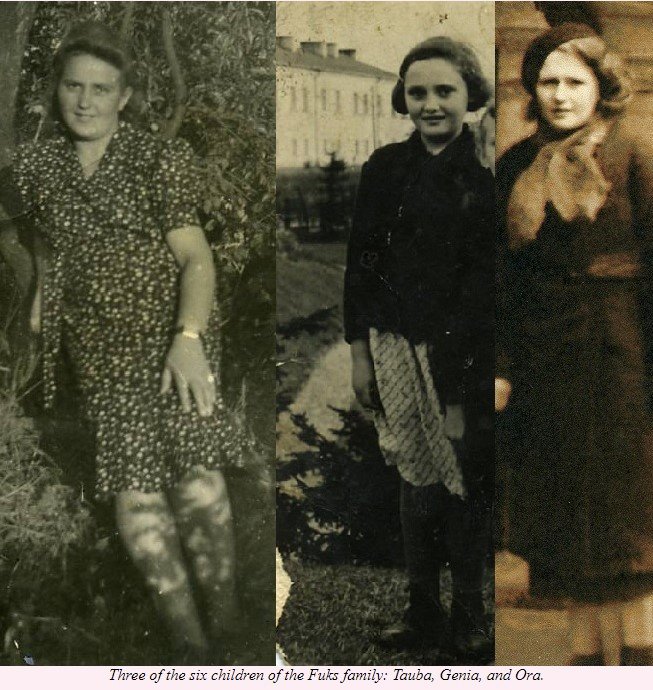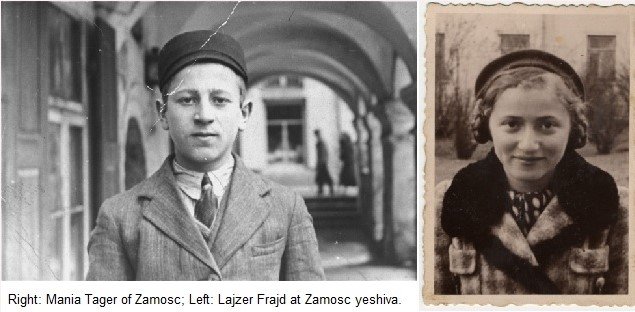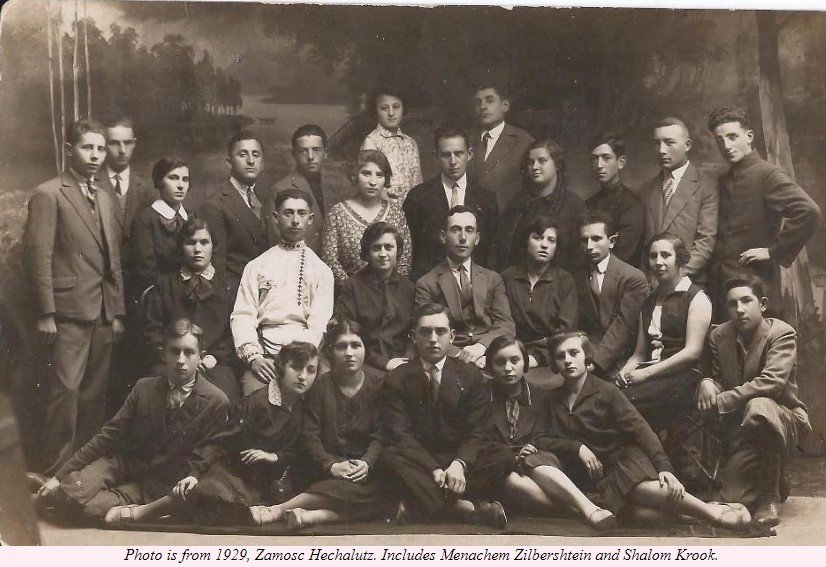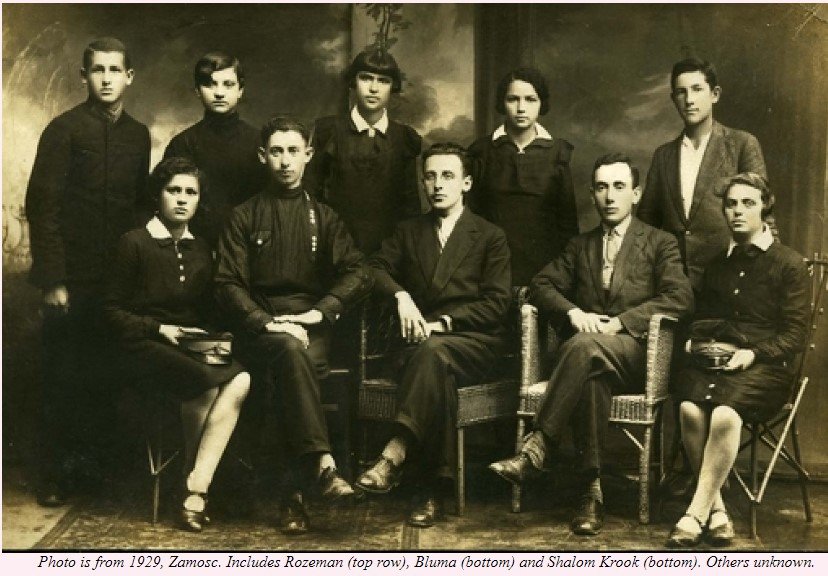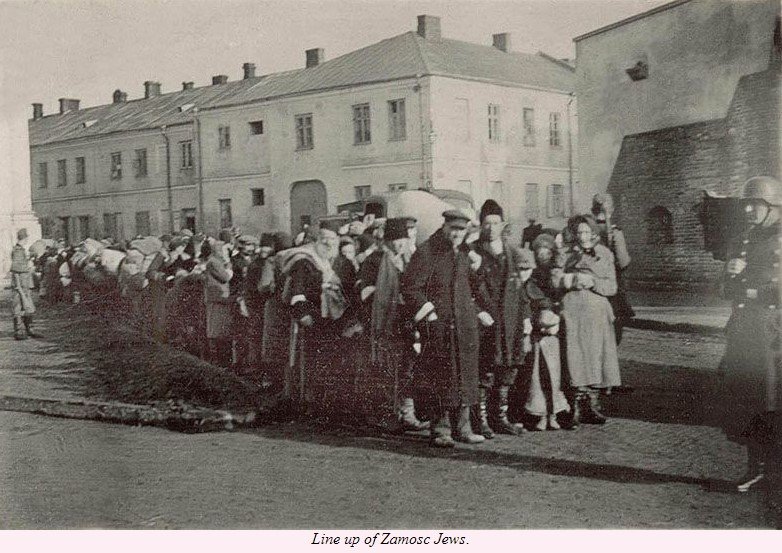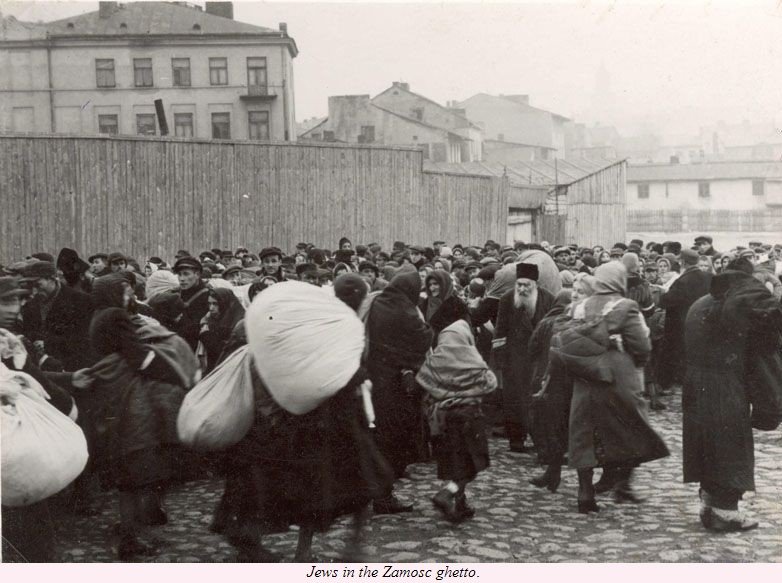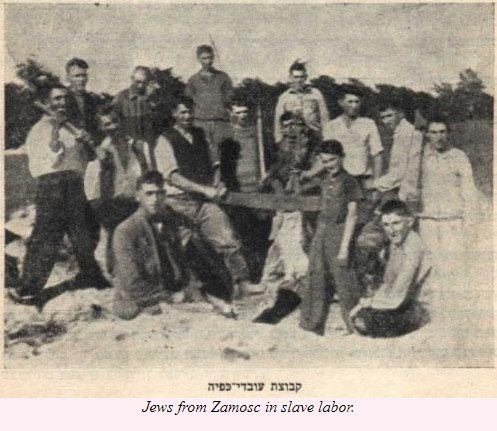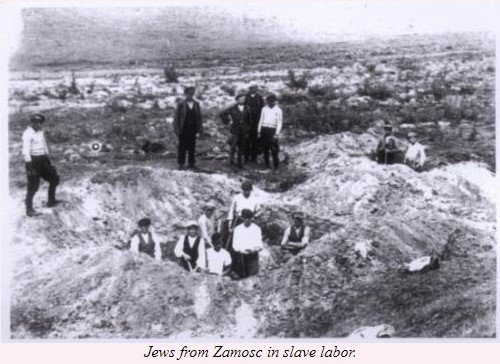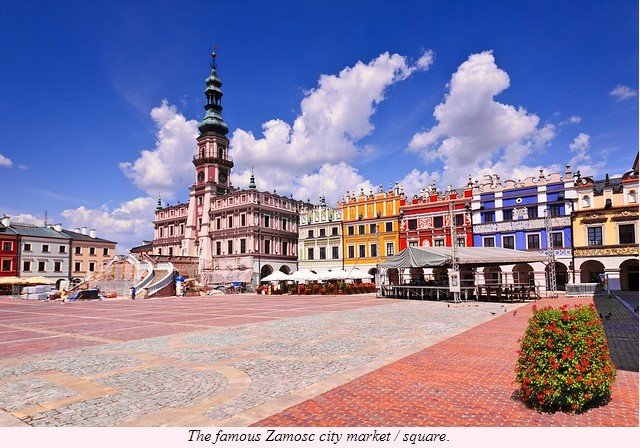Remember Jewish Zamosc
HISTORY OF JEWISH ZAMOSC
Zamosc is located in southeast Poland and has a current population of 66,000. Zamosc is located 30 kilometers northwest of Hrubieszów and 90 km. south and east of Lublin. Jews in the city date back to at least the late 16th century. Sephardic Jews settled in the city initially and were later joined by Ashkenazi Jews in the 17th century. By 1765 the Jewish population was 1,905. The Jewish population in 1921 was 9,383. In 1939, the population was 24,000 with 12,000 Jews. Jews contributed to 80 percent of the local trade, 65 percent of crafts and 54 percent of industry in the city. The first wooden synagogue was built in Zamosc between 1590 and 1603 at 9 Zamenhofa Street. The synagogue was restored in 2011. The local community is planning to make it into a museum.
The new synagogue was constructed at 32 Gminna Street in 1872. Between 1909 and 1913 it was expanded. Destroyed in WWII, it was reconstructed in 1948 and was used as a pre-school. But the current building of the former small synagogue is used by the Pentecostal Church in Zamosc. Culture among the Jewish community in Zamosc thrived between the First and Second World Wars.
The Haskalah movement had tremendous influence on Zamosc Jews, and as such many renowned Jewish intellectuals came from Zamosc, among them: Israel ben Moshe, Aleksander Zederbaum, Salomon Ettinger, Issachar ben Falkenson (born 1852), Icchak Lejb Perec, and Bronisz Huberman. During the interwar period, there were 4 bookstores, 9 public libraries and 3 large printing houses. Since 1905, there had been an amateur theater group in the town, founded by Berysz Bekierman. Zamosc had around 15,000 Jews in 1939. Jewish communities near Zamosc included: Labunie (25 Jews in 1939), Mokre (10 Jews), Sitaniec (60 Jews), and Zwierzyniec (1,000-1,500 Jews).
THE HOLOCAUST IN ZAMOSC
After a few days of heavy bombardment, which especially
damaged the Jewish quarter, the German Army entered Zamosc
on September 14, 1939. Immediately after capturing the city,
Nazis organized a series of pogroms, motivated by the desire
to loot Jewish property. On Sept. 26, 1939, the Soviet army
entered the city, but handed the city back to the Germans
two weeks later, in accordance with the new Soviet-German
demarcation line. Between 5,000 and 7,000 Jews left the
city at the point the Soviet Army withdrew. The remaining
Jewish population suffered brutality and persecutions.
Several labor camps were set up in the Zamosc area. These included: 1) A camp at Karolowka farm, mostly for women, that operated between late 1941 and May 1943. They worked on farms to supply fruits to the Wehrmacht. They also were tasked with sorting the items in the deserted Jewish quarter after the last Jews of Zamosc were deported in October 1942; 2) In mid-1941, at the end of Zdanowskiej Street, a camp under the Water Management office was created in which prisoners worked on marsh lands near the Labunka River. The camp was liquidated in 1943; 3) In June 1940, a forced labor camp was erected in the Janowice district. Every day, several hundred Jewish workers came there from Zamosc. In March, 1942 200 Jews from Izbica -- from Czechoslovakia -- were forced into labor at this camp. There were 300 workers total. Hans Pienkowski administered this camp. Prisoners carried out work on the adaptation of the camp to military barracks, and after the aggression of Germany on the USSR at the construction of a cavalry training center consisting of a stable, a riding school, a barracks and a veterinary building. On October 16, 1942, during the liquidation of the ghetto in Zamosc, the Jewish workers from Janowice were deported. Soviet prisoners were brought in their place. Soon, however, presumably due to unsatisfactory progress in the work, the Germans brought back to the Jewish camp again. The liquidation of the camp took place in the spring of 1943; 4) 350 Zamosc Jews were also sent to "Kawaler," the remnants of the former Russian fortress in Zamosc, for slave labor, starting in spring 1940. Jews from Zolkiewka, Warsaw, Otwock, Falenica and Glowna along with Zamosc Jews worked on water-works near the Labunka River at this camp. It was located on Lukasinskiego Street. In the autumn of 1940, a group of about 150 Jews from Belzec were brought to the camp. Walter Ruppert was the commander of the camp. On May 31, 1943 about 400 prisoners concentrated in the camp were taken to Majdanek. Two hiding Jews were shot on the spot. The camp ceased to exist.
Other labor camps in the Zamosc area where Jews were sent were: Bortatycze (water works), Klemensow (agricultural labor), Labunie (airport construction), Mokre (agricultural labor), Ploskie Glowne (construction), Turkowice (water works), and Zdanow (airport construction). In 1941, German Luftwaffe began to build airfields at Mokre and Labunie, near Zamosc. Jewish labor was used in the construction. Groups of workers from Zamosc were also sent to other labor camps in the Lublin district, including Wysokie Labor Camp (in June, 1940, 500 Jews from Zamosc were sent there) and the camps previously listed. More than 200 Jews from Zamosc were sent to Bialobrzegi in central Poland where they worked in agriculture, digging and drainage. Also, around 600 Jewish men from Zamosc were displaced to the Bortatycze Labor Camp in June of 1940. This was a drainage camp where the workers suffered horrific conditions. By that year in October, around 300 Jews were still at the camp. In November, 1940 the labor camp was liquidated and the few survivors were redirected back to Zamosc. In summer, 1940, an additional 474 Jews from Zamosc were sent to the Belzec Labor Camp (later Belzec Death Camp) south of the city. In mid-August of 1940, another 26 Jews were deported to Belzec Labor Camp by Police Battalion 104.
An incomplete listing of deportations and transports from Zamosc is as follows:
Nazi S.S. Heinrich Himmler decided that the area around Zamosc would be the first large area of German settlement in Poland. The Germans hoped that within ten years about 3 million Germans would settle in the territory administrated exclusively by the Nazi S.S. In October 1939, the Nazis selected a Judenrat and forced it to pay a "contribution" of 100,000 zlotys ($20,000) and the daily delivery of 250 Jews for hard labor. In December 1939 several hundred Jews expelled from Lodz, Kalo, and Wloclawek in western Poland were settled in Zamosc. In 1941 an open ghetto was established around Hrubieszowska Street, and the first deportation from the city took place on the eve of Passover, 1942 (April 11). The entire Jewish population was ordered to gather in the city's market, whereupon gunfire was directed at the crowd killing hundreds on the spot. About 3,000 Jews were forced to board waiting trains which took them to the Belzec Death Camp. From May 1-3, 1942, about 3,000 Jews from Dortmund, Germany and from Czechoslovakia were taken to Zamosc. A deportation including Jews from these areas as well as Zamosc and nearby towns were sent to Sobibor Death Camp on May 15-16, 1942, or Belzec Death Camp in six separate transfers in which 13,850 souls were sent to die.
Members of the Judenrat in Zamosc included Bronsztajn, Eliyahu Epstein, Baruch Fiszelson, Mendel "Mieczyslaw" Garfinkiel, Julian Goldsztein, Stanislaw Hernhut, Bencion Lubliner, Lejb Rozenman, Azriel Szeps, Aron Szlafrok, Icek Dawid Szlam, Shulim Tiszberg, and Baruch Wilder. Jews complicit in cooperating with the Nazis were Garfinkel, Wilder, Abram Arct, Szmul Feldsztajn, Stach Flajszman, Lejzor Szulc, Szlomo Blumsztajn, and a Jew in charge of the local Jewish police named Alvin Lippmann (from Dortmund). Those not on the list of collaborators were not complicit in helping the Nazis, and provided resistance. Overall, Judenrats in the Lublin district -- unlike in other areas of Europe -- were not complying with Nazi orders. Because of Garfinkel, an outsider, and his henchmen, this was not the case in Zamosc.
The final group living in the Zamosc Ghetto was marched to nearby Izbica on October 16-18, 1942. Many were shot on the way. From Izbica, they were sent on transports to the Belzec & Sobibor Death Camps. In this deportation, Jews offered passive resistance and hundreds went into hiding in prepared shelters. The Nazis brought in Polish firemen to open the shelters by destroying the walls and removing other obstacles. Several hundred Jews were discovered in hiding and imprisoned for eight days in the city's cinema hall without food or water; subsequently, all those who were still alive were brought to the Jewish cemetery and executed. A few hundred Jews were able to escape to the surrounding forests. Most of them crossed the Bug River, made contact with Soviet guerrillas in the Polesie forest, and joined various local partisan groups. By May, 1943 all Jews left in the ghetto in Zamosc and in forced labor camps in the vicinity -- numbering around 1,000 Jews -- were murdered at the Majdanek Camp.
The Germans also evacuated 300 villages in the Zamosc district, uprooting 110,000 Polish peasants to make room for SS men and Volksdeutsche to settle in the vacated areas. Approximately 10,000 non-Jews perished during this course of ethnic cleansing. Those evacuated by force were sent to camps in Zamosc Zwierzyniec, or Warsaw. A number of transports were sent to concentration camps such as Auschwitz or Majdanek. More than 50,000 Poles were deported to the Reich for forced labor from the Zamosc region, during 1942 and 1943. There was resistance, called the Zamosc Uprising.
The Nazis in charge of carrying out the deportations and murders in Zamosc were: Adolf Bohlmann and his commander Gotthard Schubert, Rishard Barda, Artur Bernat (or Bernard) from Silesia, Elsa Betke, Hermann Dolp, Emersleben (possibly Ludolf von Alvensleben), Robert Fekle, Fritz (Fritsche), unknown Heimann, Werner Hagemann, unknown Klukecki, Robert Kolb (or Kalb), Kurt Korda, Walter Kott, Hermann Krumey, Heinrich Kuhlman, Heinrich Langenkampfner, Peter Lucht, Bruno Meiert, unknown Neuberger, Heinz Pinkowski, unknown Reibenshein, Oskar Reichwein, Herman Rogin, unknown Rohlmann, unknown Schmidt, Alois Schwerhoff (Schuerhaf), Ernst Schulz, Hans Schulz, Jan Siering, Feliks Shyper (Shipper), Max Vogl, Helmut Weihenmaier, and Maksymilian Zillenbiller. Polish collaborators included the former priest Dobranicki, the former school music teacher Mazurek, Kazimierz Olecht (or Olek Kazimierz), and a man named Morginski.
There are two Jewish cemeteries in Zamosc. The original cemetery was set up at the end of the 17th century and located at Partyzantow Street. The last burial took place in 1941. During the Holocaust, the Nazis completely destroyed it. The "Province Culture House" was constructed on top of the desecrated remains of our Jewish ancestors. A second Jewish cemetery was established in 1907, but was destroyed in the Holocaust. Fragments of numerous tombstones remain, dating only as far back as 1934. In 1950, Zamosc Shoah survivors erected a monument and a lapidary made of tombstones and parts left from the Jewish cemeteries of the city. On the monument is a plaque with the inscription "Thou shall not kill". In 1991, a metal fence was constructed around the former cemetery.
------------------------------------------------------------------------------------------------
[In Hebrew] [Surnames and Researchers] [Books] [Wikipedia - Zamosc]
[Economic Life] [Notable Residents] [Photo Archive] [Zamosc Ghetto]
[Ghetto Account] [Holocaust] [List of Holocaust Victims from Zamosc]
[Zamosc - Partial List of Murder Victims] [Great Synagogue]
[Sephardim in Poland and Zamosc] [List of Pre-War Zamosc Immigration]
[Yizkor book Translation (English) for Zamosc] [Zamosc Jewish Graduates]
[Zamosc Class Photos] [Family Research in Southeast Poland]
[Resources for Finding Your Family] [Israeli Organization of Zamosc Jewry]
-------------------------------------------------------------------------------------------------
Former Zamoscer Organizations:
Zamoscher Society, New York
First Zamoscher Congregation Bikur Cholim, Flushing, NY
Zamosc Progressive Society, New York
Zamoscher Progressive Young Men 375 Workman's Circle, Elmont, New York
Zamoscher Beneficial Association, Progressive Young Men of Philadelphia
Friends of Zamosc, Philadelphia
Zamostcher Relief Committee
Montreal Zamoscher Society, Canada
Zamoscher Yiskor Book Committee, Argentina
Zamoscher Yisker Book Committee, Argentina
Zamostcher Relief Committee, Argentina
------------------------------------------------------------------------
Return to Lublin IndexLINKS
Join the Zamosc group on Facebook!
City of Zamosc:
- Fiszelzon Holocaust Testimony from Zamosc
- Film about Zamosc by Ewa Szprynger
- Jewish Community of Zamosc
- Jewish Resistance and Extermination in Zamosc
- Krasnobrod Yizkor Book
- Mount Zion Cemetery in Flushing, New York
- Old Zamosc Synagogue
- Pinkas Hakehillot Polin: Zamosc During the Holocaust
- Restored Zamosc Synagogue
- Revitalization of the Zamosc Synagogue
- Simon Wiesenthal Center - Zamosc
- Society for the Preservation of Jewish Heritage in Poland: Zamosc
- Weinryb Holocaust Testimony from Zamosc
- Zamosc Yizkor Book Online
- Zamosc Yizkor Book Online (no English)
- Zamosc Ghetto Photos
- The Zamosc Ghetto (see also: Life in Zamosc Ghetto)
- Zamosc Jews
- Zamosc Sephardic Synagogue
Lists of Zamosc:
- First Zamosher Congregation in Flushing, New York
- Lists of New York Zamosc Residents
- People Buried from Zamosc in NY/NJ Plots
- Surnames in Zamosc Society Cemetery Plots in NY and NJ
Families of Zamosc:
- Bergman family
- Brondwajn family
- Brumer family
- Czesny family
- Ejnes family
- Fuks family
- Gelibter family
- Grinbaum family
- Griner family
- Holzman family
- Kenigsberg family
- Kranz family
- Mahl family
- Markfeld family
- Matys family
- Mendelsohn family
- Mendelson family
- Peres family
- Rajman family
- Rozenberg family
- Sztych family
- Truk family
- Weinryb family
- Zoberman family
Labor/Concentration Camps:
- Ghetto Listing: Poland
- Belzec Concentration Camp
- Budzyn Labor Camp (Krasnik)
- Chelm Ghetto Uprising
- Izbica Ghetto
- Lublin Ghetto
- Wlodawa Ghetto
- Zamosc Ghetto
- Lipowa Street Labor Camp (Lublin)
- Majdanek Concentration Camp (Liberation of Majdanek)
- Majdanek sub-camp: Trawniki
- Majdanek - A Poem by Rosette Goldstein
- Plaszow Concentration Camp (Krakow)
- Sobibor Concentration Camp
- Treblinka Concentration Camp
Survivors of Grabowiec
Survivors of Komarow
Survivors of Krasnobrod
Survivors of Szczebrzeszyn:
- Chanoch Becher
- Baruch Bibel
- Froim Farber
- Moshe Frost
- Sara Ingber Fuks
- Chana Honikman
- Wolf Ingber
- Shimon Kantz
- Judah Kelner
- Jacob Nuss
- Moshe Messinger
- Bella Szer Rosenblum
- Hanche Wajntraub
- Szija Zisbrenner
Majdan Tatarski Ghetto Victims (Lublin) from Zamosc:
Berysz Fleszler
Sara Brajndla Goldman
Machla Goldstajn
Salomon Falek Goldwag
Majer Mandeltort
Dwojra Minc
Icek Morgensztern
Mojzesz Moszko Perec
Cyrla Rozencwajg
Sara Sztajnberg, nee Bajerman
Jakob Dawid Wajs
Dawid Wal
Lejzor Dawid Wagner
Perla Zysman
(source: Brama Grodzka - Teatr NN)
Survivors of Zamość:
Note: Additional survivors listed in Pinkas HaNitzolim II
Zvi Ackerman
Bronia Akerman (went to England)
Nathan Avruch
Avromcheh Baum
Zalek Berger
Genia Birenfeld
Dobia Birnbaum
Hinda Birnbaum
Syma Birnbaum
Batsheva Biterman Buchbinder
Zipora Biterman Gajst
Moshe Blechman
Miriam Blechman Reitzenstein (video testimony)
Miriam Blum Domb
Marek Bojm
Sala Bojm
Nehemja Bot (Lazer)
Sara Brocholc
Chana Brondwejn Wechter
Tzvi Brumer
Yakov Buchbinder
Rose C.
Wolf Chowet
Brother of Wolf Chowet
(lived in Duszniki-Zdroj)
Sabina Cuker
Dawid Cymring
Bluma Czesner
Chaim Dorenfeld
Basha Betty Drang
Sonia Elbaum
Josef Elster
Elyeh Epstein
His son (unknown Epstein)
Ruchla Fejgenberg Imri
Leon Feldhendler
Abraham Feldman
Rubin Feldstein
Stakh Fleischman
Sender Fleschler
Avromcheh Flug (Plug)
Khosn David Flug (Plug)
Moshe Frank (testimony)
Abba Friedling
Yekhiel Friedrich
Frieda Frimer
Tauba Fuks Biterman
Raizel Fuks Feldman
Hersh Gajst
Dudek Garfinkel
Memek Garfinkel
Henryk Gass
Paula Gerson (Pesia Szajd)
Naomi Gliksman
Lejb Goldgraber
Yechiel Goldzweg
Bernard Green
Chaim Griner
Zvi Griner (Fr. Grzegorz Pawlowski)
Pesla Griner Zawierucha
Shepsel Sheldon Griner
Adela Gruzin
Nettl Grynszpan
Yishayahu Gutlib
Faye Guttman
Josef Herszman
Moshe Hochman
Chuna Idelsberg
Velvel Jungztejn (Jungsztajn)
Lejb Jungsztejn (Youngstein)
Isidore K.
Izak "Itcha" Kaufman
Regina Kleiner
Chaim Klejner
Lejb "Leo" Kliger
Josef Kofp
Israel Korn
Miriam Kranc
Sam Kranc
Sarah Kranc
Yisrael "Harry" Kranc (testimony)
Shalom Kruk
Maria Krych
Froim Kupfer
Maria Kusmierczuk
Simcha Lemberger
Guta Lerner
Miriam Lewant
Henryk Lewandowski (testimony)
Dawid Lewin
Malya Lichtenberg
Elka Lichtman Peltz
Judka Lichtman
Sam Szulim Lichtman
Yitzchak Lichtman
Shmuel Litvak
Rivka Loboda
Roza Luft (went to Sweden)
Gerald Maiman
Mordechai Mandelbaum
Jacob Mandelbaum (went to China)
Motel Marman
Dawid Mekler (Makler)
Leon Mendelsohn
Yakov Neimark (Najman)
Ethel Oberrotman Cydulka
Moshe-Yekkl Osowsky
Fr. Gregor Pawlowski (Hersz Griner)
David Peltz (testimony)
Lejb Pelz
Rachel Pietruszka
Lea Pszenica
Itzeleh Radoshitzer's son
Eliezer Reisfeld
Jack Riback
Shmuel Rosen
Sara Rozen Damski
Dawid Safir
Molly Schimel
Boruch Silberklang
Pola Singer
Bajla Sobol Schlier
Hersh Sobol
Issachar Sobol
Ruchla Sobol
Szewa Sobol
Szandla Sobol
Pesach Spodek
Yisrael Spodek
Shimon "Joe" Stone
George Storch
Miriam Storch Lewent
Mordechai Strigler (poetry)
Majer Szajnbaum (went to Honduras)
Nehemja Szajnbaum (went to Honduras)
Jakob Szackamer
Jankiel Szackamer
Sura Szlafrok
Eliezar Szmuklerski
Chaim Szpizajzen
Szyja Sztajn
Benjamin Sztern
Abram Sztybel (Shtibel)
Chaim Sztybel (Shtibel)
Yakov Szwarcz
Szloma Szwarczberg
Josef Szyfer
Stanislawa Szymkiewicz
Rose Szywic Warner
(unknown) Tepich
Judith Traub
(unknown) Tzitzman
(unknown) Wagner
Sara Wainberg
Rose Warner
Irene Wechter Lieblich
Leon Lejb Wechter
Mieczyslaw Weinryb
Abraham Weintraub
Baruch Wilder
Abraham Winiaver
Miron Wogel
Rachel Z.
Lea Zegen Weiselman
Jack Zimmerman
Salia Zimmerung
Yitzhak Zinger
Ephraim Zitzer
Josef Zitzer
Malka Zitzer
Yechiel Zoberman
Jekuthiel Zwilich
Aharon Zwiron
Simcha Zwiron
Jacobo Zylberberg
Notable Residents of Zamosc:
- Additional Notable Residents
- Berish Beckerman
- Joseph Epstein
- Szlomo Ettinger
- Froim Fiszelson
- Hania Gerson, wife of Philipp Frank
- Bronislaw Huberman
- Rabbi Jacob ben Wolf Kranz, the Maggid of Dubno
- Rabbi Yitzhak Kranz, son of the Maggid of Dubno
- Lejbus Ludwig Lewinsohn
- Irene Wechter Liebler
- Yochanan Morgensztern
- I. L. Peretz
- Mordechai Shtrigler
- Yosef Retik
- Avoth Yeshurun (Chil Perlmuter)
- Sasha Zederbaum
Rabbis of Zamosc:
- Shlomo of Zamosc
- Avraham Chmerlosz
- Yoel Baal Shem
- Tzvi Hersh Katz, 1687
- Meir HaLevi ben Menashe
- Nachman (grandson of Aryeh Leib)
- Abraham ben Isaac Ha-Cohen
- Aryeh Leib of Lublin, 1730
- Yakov Yitzhak Hochgelernter, 1740
- Rabbi Yaacov ben Zeev Krantz, 1786-1804
- Yosef Hochgelernter
- Salomon ben Mojzesz Chelma, 1720–1781
- Tzvi Hirsz Baszka, 1740-1807
- Yitzhak Yakov Hochgelehrter, died 1826
- Baal Shem Harishon
- Majer Rozen
- Israel Askeluz
- Avraham bar David
- Hersh Sigel/Zigel
- Moszek Lwow
- Mosze Yehoshua Heszel Wahl
- Nachman Szlomo HaLevi
- Aryeh Yehuda Yakov Majzeles
- Leibusch Meisels, ?-1845
- Szlomo Zalman
- Izaak Horowicz
- Jacob ben Wolf Kranz, the Maggid of Dubno
- Yitzhak Kranz, son of the Maggid of Dubno
- Josef Szlomo Szabtai HaLevi Horowicz, 1889-1928
- Lejb Brondwajn
- Nathan Hebenstreit
- Moszko Chaim Blum
- Yitzchak Halpern, cantor
- Moshe Epstein
- Mordechai HaLevi Horowitz Sternfeld, 1928-WWII
Righteous Gentiles of Zamosc:
- Bajak family
- John Damski
- Maria Kusmierczuk
- Janusz Urzykowski
Genealogy:
Polish Archives at Lublin
Polish Archives at Zamosc
We Remember Jewish Zamosc (Hebrew)
Jewish Records Indexing Poland - Zamosc
Jewish Vital Records in the Polish State Archives
Remember Jewish Zamosc!
Zamosc: Traces of the Past
Visiting Zamosc
Remember Your Family:
Central Judaica Database - Museum of History of Polish Jews
Grandchildren of Holocaust Survivors on Facebook
Guide to the YIVO Archives
Holocaust News/Events from Generations of the Shoah Int'l
Holocaust Survivors and Victims Database
JewishGen Family Finder
JewishGen Holocaust Database
JRI-Poland: Search for Your Family
Museum of History of Polish Jews Introduction
Yad Vashem: Search for Your Family
Yad Vashem: Submit Names of Your Family Members
Yad Vashem Requests Photos of Shoah Survivors and Families
CONTACTS
ISRAEL: Issy Schek, info@zamosc-jews.com
The Israeli Organization of Zamosc Jewry & Their Descendants
PO Box 16090, Tel-Aviv 61160, Israel
Zamosc-Jews.com
U.S.: LublinJewish@gmail.com



